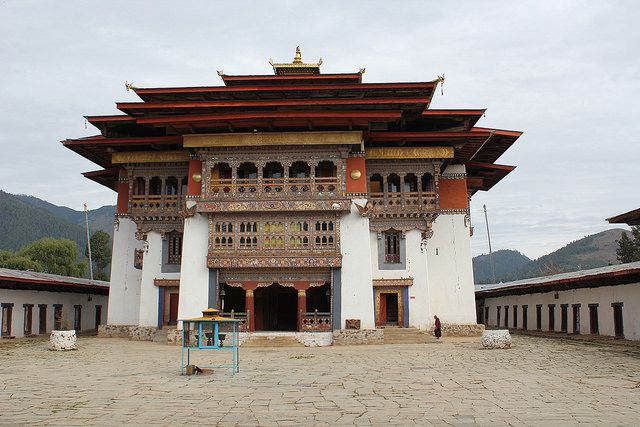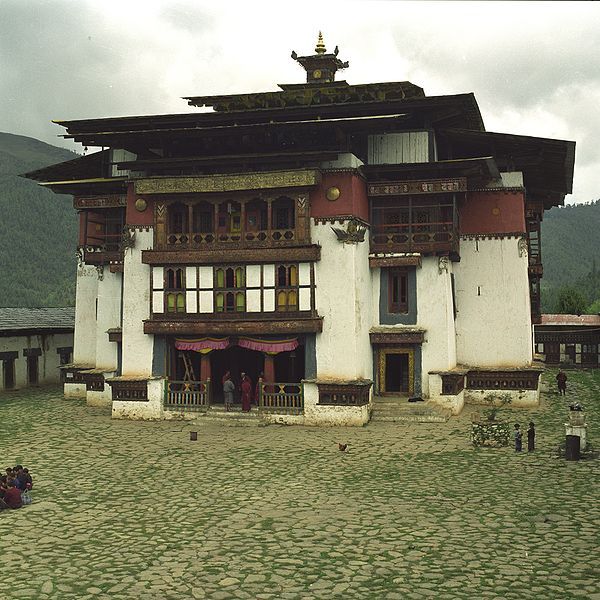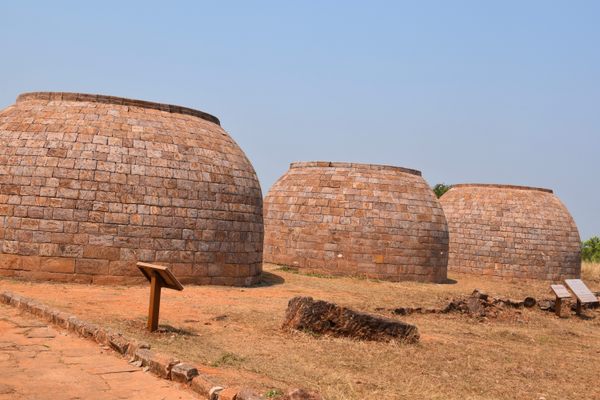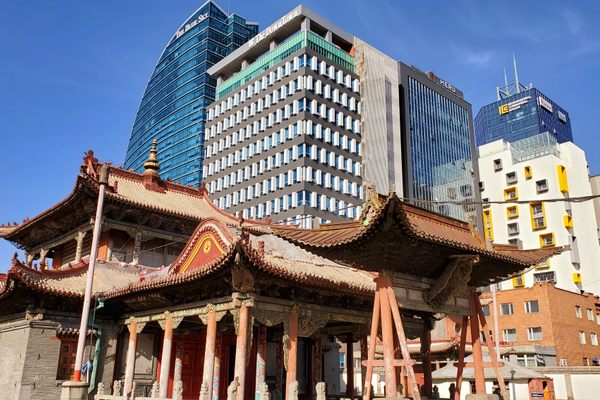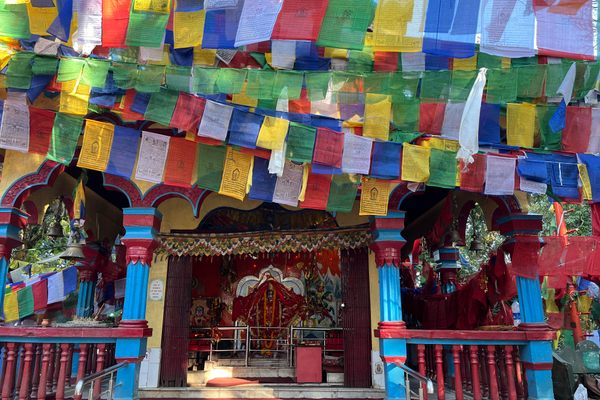About
Gangteng Gompa is a historic monastery in the Black Mountain region of Bhutan. Built in the early 17th century, the monastery was established by Gyalse Rigdzin Pema Thinley, the grandson of the canonized Bhutanese “treasure revealer,” Pema Lingpa. Today, Gangteng Gompa is the largest Nyingmapa monastery in Western Bhutan.
Buddhist mythology recalls the narrative of an ancient guru who hid terma (sacred treasures of Buddhist wisdom) for select terton (treasure finders) to reveal in the future when the time was right. The terma were hidden for their protection so that the terton could transmit Buddha’s teachings through the generations should his knowledge ever be lost or destroyed.
Pema Lingpa, the grandfather of the monastery’s founder, was understood as an incarnation of that ancient guru. Following a series of revelations, he astoundingly unearthed over 100 terma across Bhutan in the mid-1470s. Rendered “King Terton,” Pema Lingpa made a pilgrimage to the imposing Black Mountain range, where he envisaged one of his descendants would build a monastery.
Gangteng Gompa was established in 1613 by Pema Lingpa’s grandson on a spur in the Black Mountains called the Gangteng Sang Nga Chöling, which translates to “summit for the teaching of the dharma.” Local timber was used for the temple’s beams, doors, pillars, and windows. Delep, a guardian deity, supposedly created a landslide in the mountains for better access to stones. A team of community artisans embellished the space with exquisite technicolor detail.
The monastery was restored between 2002 and 2008. Conservators worked to preserve the temple’s original detail with the addition of over 100 new pillars. Upon the temple’s completion, it was re-presented as Gangteng Sangngak Chöling, and consecrated by the ninth Gangteng Trulku, who is considered the current incarnation of Pema Lingpa.
Related Tags
Know Before You Go
On November 12 of each year, Gangteng Gompa hosts a Crane Festival to mark the annual arrival of black-necked cranes from the Tibetan plateau. Hundreds of cranes, which are sacred in the region, return to the monastery to roost, thought to bless the space by circling it three times.
Festivals & Temples of Bhutan
Festivals, astrology, and epic landscapes in Bhutan.
Book NowCommunity Contributors
Added By
Published
November 27, 2018




